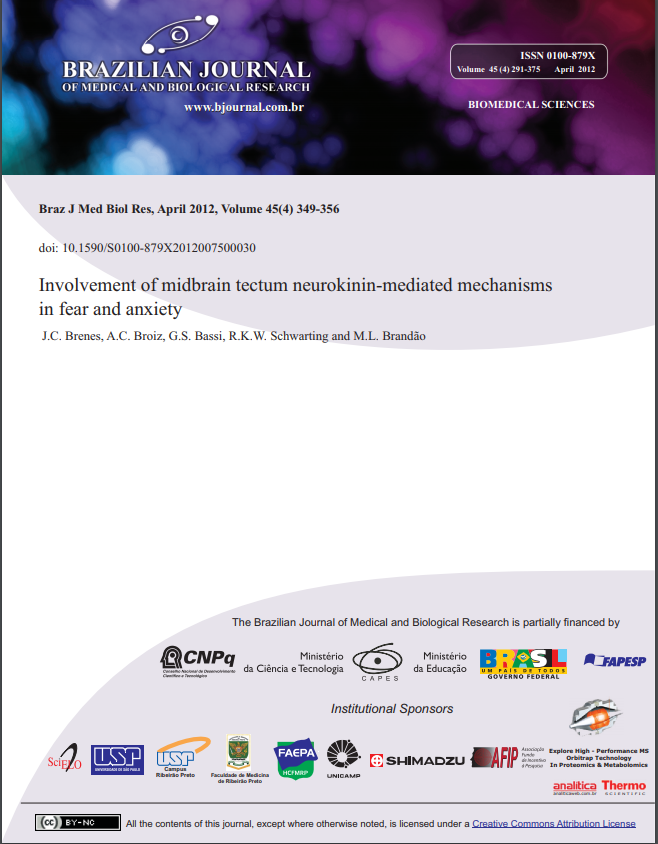- Español
- English

Resumen
Electrical stimulation of midbrain tectum structures, particularly the dorsal periaqueductal gray (dPAG) and inferior colliculus (IC), produces defensive responses, such as freezing and escape behavior. Freezing also ensues after termination of dPAG stimulation (post-stimulation freezing). These defensive reaction responses are critically mediated by γ-aminobutyric acid and 5-hydroxytryptamine mechanisms in the midbrain tectum. Neurokinins (NKs) also play a role in the mediation of dPAG stimulation-evoked fear, but how NK receptors are involved in the global processing and expression of fear at the level of the midbrain tectum is yet unclear. The present study investigated the role of NK-1 receptors in unconditioned defensive behavior induced by electrical stimulation of the dPAG and IC of male Wistar rats. Spantide (100 pmol/0.2 μL), a selective NK-1 antagonist, injected into these midbrain structures had anti-aversive effects on defensive responses and distress ultrasonic vocalizations induced by stimulation of the dPAG but not of the IC. Moreover, intra-dPAG injections of spantide did not influence post-stimulation freezing or alter exploratory behavior in rats subjected to the elevated plus maze. These results suggest that NK-1 receptors are mainly involved in the mediation of defensive behavior organized in the dPAG. Dorsal periaqueductal gray-evoked post-stimulation freezing was not affected by intra-dPAG injections of spantide, suggesting that NK-1-mediated mechanisms are only involved in the output mechanisms of defensive behavior and not involved in the processing of ascending aversive information from the dPAG.


